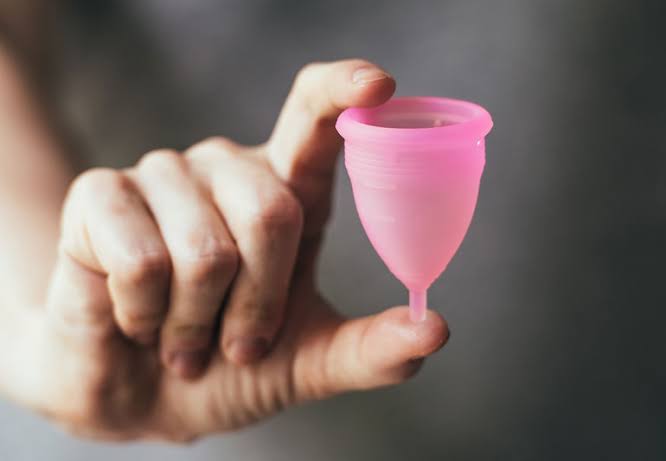A menstrual cup is a type of reusable feminine hygiene product. It’s a small, flexible funnel-shaped cup made of rubber or silicone which can be inserted into your vagina to collect menstrual fluid.
Cups can hold more blood than other methods, leading many women to use them as an eco-friendly alternative to tampons. And depending on flow, cup can hold up to 12 hours.
When cup isfolded and insert it intovagina, it open and forms a seal against the walls of the vagina. Menstrual fluid is then trapped in the cup until its removed for emptying.
Menstrual cups have been around since at least the 1860s. Because of concerns about inserting them and the discomfort of the early rubber models, these cups weren’t widely used. Menstrual cups have recently become mainstream partly due to an improved design and soft silicone construction.
There are advantages using menstrual cups, the most notable being that they’re reusable. Many menstrual cups can be used for years. Instead of spending money on tampons or sanitary napkins each month, you can save some cash by using menstrual cups.
Menstrual cup can be used up to 12 hours before it needs to be emptied. Compared to the average 4 to 8 hours for a tampon, that’s a good amount of time saved.
Other advantages of menstrual cups include :
- Unlike tampons, menstrual cups don’t dry the vagina. This preserves the healthy bacteria that protect you from vaginal infections.
- Menstrual cups aren’t associated with toxic shock syndrome (TSS), which is a rare, life-threatening condition linked to tampon use.
- Menstrual cups don’t contain chemicals found in tampons and pads, such as bleach and dioxin.
- Many women report having less severe cramping when using cups, although no clinical studies have been performed to support this.
- Menstrual fluid develops an odor when exposed to air. Cups eliminate this issue.
- Most women report that they don’t even feel the cup when it’s in place.
- Reusable menstrual cups are environmentally friendly.
It often takes some practice to learn how to insert a menstrual cup. There’s also the matter of cleanup. Many women aren’t comfortable washing out their cups in public bathrooms. Some people carry a small bottle containing water or wipes to clean the cup when they’re in a bathroom . or can be wiped with toilet paper.
Top of Form
Bottom of FormSelecting a Menstrual Cup
There are different brands of menstrual cups available.
Most are available in two sizes.
The small size is size 1. It’s geared toward teens and women under age 30. Women who have never given birth may also prefer the smaller cup.
A slightly larger version, size 2, is for women over age 30. This size is also recommended for women who have given birth and women who have a moderate to heavy menstrual flow.
- Allergic to rubber or latex
- Use of intrauterine device for birth control is a risk because sometimes it’s necessary to shorten the string attached to the IUD so that you won’t pull it out when you remove your menstrual cup
- you’ve ever had TSS
- Recently had surgery, given birth, or had a miscarriage
- Vaginal infection
- you’ve never had sexual intercourse and you’re concerned about maintaining your hymen
To figure out the right menstrual cup size for you, you and doctor should consider:
- your age
- length of your cervix
- whether or not you have a heavy flow
- firmness and flexibility of the cup
- cup capacity
- strength of your pelvic floor muscles
- if you’ve given birth vaginally
Smaller menstrual cups are usually recommended for women younger than 30 years old who haven’t delivered vaginally. Larger sizes are often recommended for women who are over 30 years old, have given birth vaginally, or have a heavier period.
Before you put in your menstrual cup
When you use a menstrual cup for the first time, it may feel uncomfortable. But “greasing” your cup can help make the process smooth. Before you put in your cup, lubricate the rim with water or a water-based lube (lubricant). A wet menstrual cup is much easier to insert.
How to put in your menstrual cup
- Wash your hands thoroughly.
- Apply water or a water-based lube to the rim of the cup.
- Tightly fold the menstrual cup in half, holding it in one hand with the rim facing up.
- Insert the cup, rim up, into your vagina like you would a tampon without an applicator. It should sit a few inches below your cervix.
- Once the cup is in your vagina, rotate it. It will spring open to create an airtight seal that stops leaks.
You shouldn’t feel your menstrual cup if you’ve inserted the cup correctly. You should also be able to move, jump, sit, stand, and do other everyday activities without your cup falling out. If you’re having trouble putting in your cup, speak with your doctor.
When to take your menstrual cup out
You can wear a menstrual cup for 6 to 12 hours, depending on whether or not you have a heavy flow. This means you can use a cup for overnight protection.
You should always remove your menstrual cup by the 12-hour mark. If it becomes full before then, you’ll have to empty it ahead of schedule to avoid leaks.
How to take your menstrual cup out
To take out a menstrual cup, just follow these steps:
- Wash your hands thoroughly.
- Place your index finger and thumb into your vagina. Pull the stem of the cup gently until you can reach the base.
- Pinch the base to release the seal and pull down to remove the cup.
- Once it’s out, empty the cup into the sink or toilet.
Cup aftercare
Reusable menstrual cups should be washed and wiped clean before being reinserted into your vagina. Your cup should be emptied at least twice a day.
Reusable menstrual cups are durable and can last for 6 months to 10 years with proper care. Throw away disposable cups after removal.
Many women choose to use menstrual cups because:
- They’re budget friendly
- Menstrual cups are safer.
- Menstrual cups hold more blood.
- They’re eco-friendly.
The disadvantages of using menstrual cup
- Cup removal can be difficult.
- They can be tough to insert or remove.
- It can be hard to find the right fit.
- You may be allergic to the material.
- It may cause vaginal irritation.
- There can be an increased chance for infection.
What can happen if it is not cleaned properly
Cup to be cleaned properly.Bacteria, odors, stains, and erosion can occur.
This could lead to irritation, or, in more rare cases, infection.
This also means that your cup will likely need to be replaced more often.
That’s why it’s recommended to keep up with your daily cleaning and monthly sterilization.
What to do if you develop an infection during or after use
If you develop any type of infection during use, stop using the cup immediately and talk to a doctor or other healthcare professional.
They’ll be able to determine the best steps moving forward.
Signs of infection include:
- unusual vaginal discharge
- vaginal pain or soreness
- burning during urination or intercourse
- foul odor from the vagina
- Yeast and bacterial infections are treatable. Just remember to replace the cup before your next period.
- If you’re able to maintain daily cleaning during your period, as well as monthly sterilization, your cup will stay in good condition.
SANITARY NAPKINS
- A sanitary napkin or menstrual pad, is an absorbent worn by women in their underwear when menstruating, also used when it is necessary to absorb a flow of blood from the vagina. Pads are generally changed by being stripped off the pants and panties, taking out the old pad, sticking the new one on the inside of the inner wear and pulling them back on. Pads are recommended to be changed every 3–4 hours to avoid certain bacterial infection also may differ depending on the kind worn, flow, and the time it is worn.
- Menstrual pads are made from a range of materials, differing depending on style, country of origin, and brand.
- ultimately, the choice between a menstrual pad and a menstrual cup depends on the person. “Comfort is the important factor here. Both pads and cups are used in terms of the environmental impact and how they feel when used.





